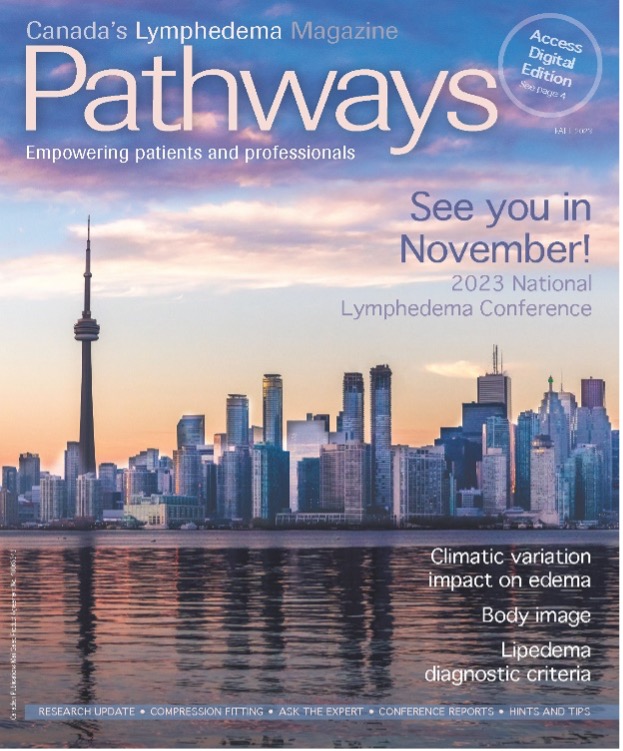How do we diagnose lipedema
Recommendation of the Diagnosis Working Group of the International Lipoedema Association
Dr Anna Towers
Originally published in Pathways, (Fall, 2023). Copyright (2023), Canadian Lymphedema Framework. Reprinted with permission.

Practitioners specialising in lymphoedema often encounter challenges in assessing lipoedema compared to lymphoedema. This difficulty is, in part, attributable to varying perspectives internationally. An article featured in the Canadian Pathways Magazine presents a valuable diagnostic framework, offering guidance to practitioners in this regard. It’s from the recommendations of the Diagnosis Working Group of the International Lipoedema Association.
Table 1 in the article provides a straight forward approach to diagnosis
Diagnosis of lipoedema may be made when all the following major criteria are present:
A1, A2, A3
A 1 Disproportionate subcutaneous fatty tissue distribution between upper and lower body, which is symmetrical
A2 Reported enhanced sensitivity to touch in the affected areas with objective allodynia (elicited pain) on a pinch test
A3 Normal hands and feet (in the absence of obesity or lymphedema complications)
B1 is a minor criterion that may be present or absent. It serves to reinforce the diagnosis.
B 1 Significantly thickened subcutaneous fat in lower or/and upper extremity with sudden stop at the joints (“cuff sign” at ankle, elbow or wrist)
The full text of the Working Group report
Other useful articles:
Lipedema Management Q & A with Tobias Bertsch MD https://lymphoedemaeducation.com.au/2022/07/lipedema-management-q-a-with-tobias-bertsch-md/




